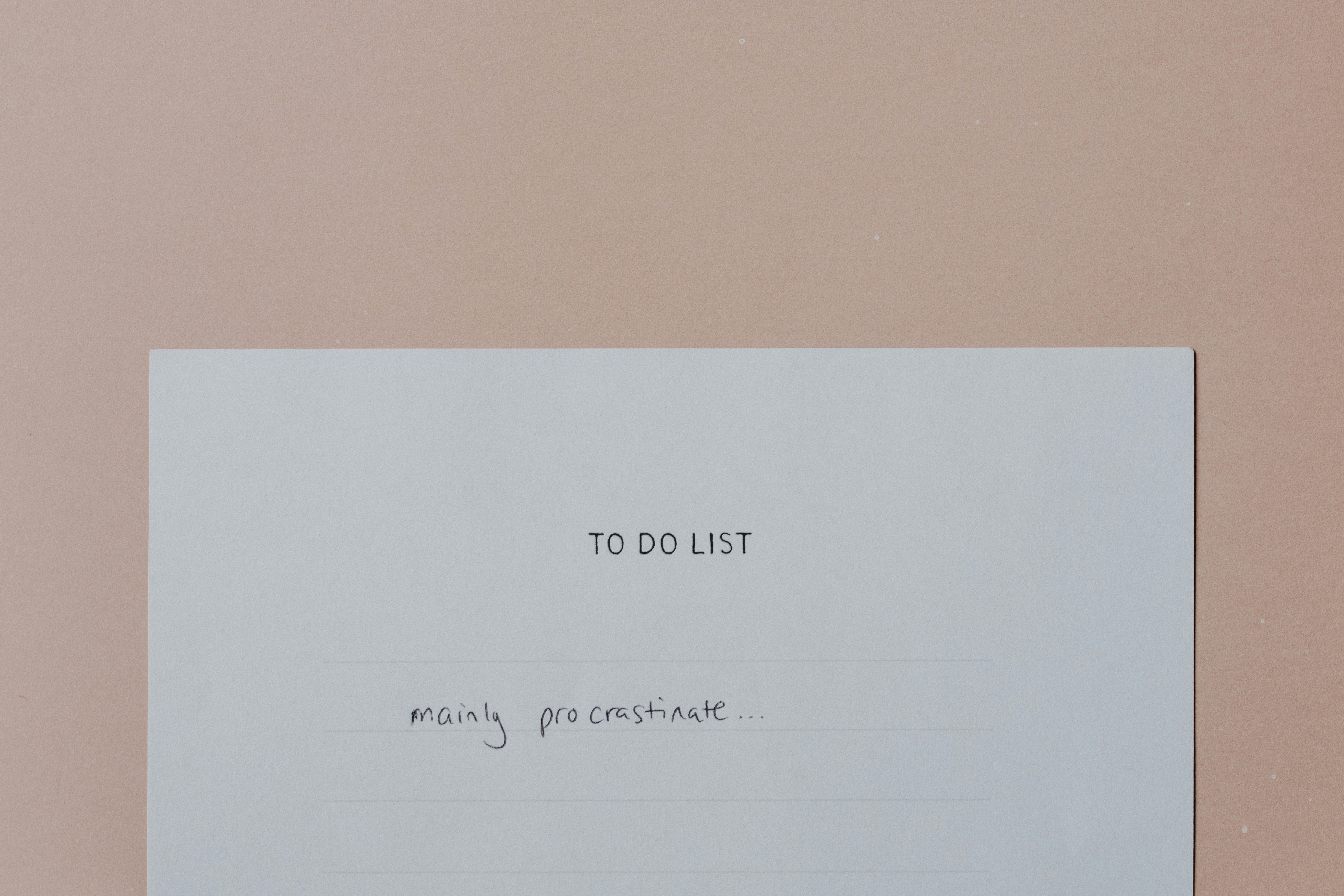We’ve all been there. That important task is looming on your to-do list, but somehow you find yourself reorganizing your sock drawer, scrolling through social media, or suddenly developing an intense interest in the mating habits of Peruvian tree frogs. Anything but tackle that task, right?
Welcome to the world of procrastination, where “I’ll do it later” is the national motto and deadlines are more like suggestions. But fear not! It’s time to break free from the endless cycle of delay.
Why Do We Procrastinate, Anyway?
Before we jump into the solutions, let’s take a quick peek at why we procrastinate in the first place. Contrary to popular belief, procrastination isn’t about laziness. It’s more about emotions.
Dr. Tim Pychyl, author of “Solving the Procrastination Puzzle,” puts it this way: “Procrastination is an emotion regulation problem, not a time management problem.”
In other words, we’re not putting things off because we can’t manage our time. We’re doing it because we’re trying to manage our feelings. Maybe it’s fear of failure, perfectionism, or just feeling overwhelmed. Whatever the reason, recognizing that procrastination is about emotions is the first step to overcoming it.
Your Anti-Procrastination Toolkit: 7 Strategies That Actually Work
1. The “Five-Minute Rule”: Just Dip Your Toe In
The hardest part of any task is often just getting started. That’s where the “Five-Minute Rule” comes in handy.
Here’s how it works: Tell yourself you’re only going to work on the task for five minutes. That’s it. Just five minutes. It’s a commitment so small, it’s hard to say no to.
The magic? Once you start, you’ll often find it’s easier to keep going. And even if you do stop after five minutes, hey, that’s five minutes more progress than you had before.
Try This: Set a timer for five minutes and start working on that task you’ve been avoiding. When the timer goes off, decide if you want to keep going or stop. No pressure either way!
2. Eat That Frog: Tackle the Biggest Task First
Mark Twain once said, “If it’s your job to eat a frog, it’s best to do it first thing in the morning. And if it’s your job to eat two frogs, it’s best to eat the biggest one first.”
In other words, tackle your most challenging or least appealing task first thing. It might not be pleasant, but once it’s done, the rest of your day will feel like a breeze in comparison.
Try This: Identify your “frog” for tomorrow. Make it the first thing you do when you start your day.
3. The Pomodoro Technique: Work in Focused Bursts
Named after a tomato-shaped kitchen timer (pomodoro is Italian for tomato), this technique involves working in focused 25-minute bursts, followed by 5-minute breaks.
Here’s how it works:
- Choose a task
- Set a timer for 25 minutes
- Work on the task until the timer rings
- Take a short 5-minute break
- Every four “pomodoros,” take a longer break (15-30 minutes)
This method works because it breaks work into manageable chunks and builds in regular breaks, which can help maintain motivation and focus.
4. Make It Stupid Easy: Lower the Bar
Sometimes, we procrastinate because the task seems too big or overwhelming. The solution? Make it so easy you can’t say no.
Want to start exercising? Don’t commit to an hour at the gym. Just commit to putting on your workout clothes. Want to write a book? Don’t try to write a chapter. Just commit to opening your writing software and typing one sentence.
By making the initial step ridiculously easy, you remove the mental barrier to getting started. And once you start, it’s easier to keep going.
Try This: Think of a task you’ve been putting off. What’s the smallest possible step you could take towards it? Commit to just that tiny step.
5. The “If-Then” Planning
“If-then” planning is a great tool for overcoming procrastination. It involves deciding in advance when and where you’ll complete a specific task.
For example: “If it’s 2 PM, then I’ll start working on my presentation.” Or “If I finish my lunch, then I’ll immediately tackle that email I’ve been avoiding.”
Research shows that people who use if-then planning are significantly more likely to follow through on their intentions.
Try This: Create an if-then plan for a task you’ve been procrastinating on. Be specific about the time and place you’ll do it.
6. The Seinfeld Strategy: Don’t Break the Chain
Comedian Jerry Seinfeld used a simple but effective strategy to motivate himself to write jokes every day. He’d hang a big yearly calendar on the wall and put a red X over each day he wrote jokes. After a few days, he had a chain. His only job was to not break the chain.
This strategy works because it focuses on consistency rather than perfection. It doesn’t matter how good the jokes were or how long he wrote. All that mattered was that he did it.
Try This: Choose a habit you want to build. Get a calendar (physical or digital) and mark off each day you do it. Your goal? Don’t break the chain!
7. Be Kind to Future You
Here’s a surprising finding from procrastination research: Self-forgiveness can help reduce future procrastination.
When we procrastinate and then beat ourselves up about it, we often end up feeling so bad that we… procrastinate more. It’s a vicious cycle. But when we forgive ourselves, we’re able to move on and do better next time.
Try This: The next time you catch yourself procrastinating, take a deep breath and say, “It’s okay. I forgive myself for procrastinating.” Then, choose one of the strategies above and take a small step forward.
Final Thoughts
Overcoming procrastination isn’t about becoming a productivity machine. It’s about learning to navigate our emotions, manage our impulses, and take meaningful action despite discomfort.
As author Elizabeth Gilbert says, “Done is better than perfect.” Embrace imperfect action. Start small. Celebrate your progress. Be kind to yourself when you slip up (because you will, and that’s okay).
Every time you choose to act instead of procrastinate, you’re rewiring your brain. You’re building the habit of doing rather than delaying. And over time, those small choices add up to big changes.
So, as you finish reading this article, take a moment to think about that task you’ve been putting off. What small step could you take right now? Maybe it’s opening the document, sending that email, or making that phone call you’ve been avoiding.
Whatever it is, why not do it now? After all, future you will thank present you for it.
And if you’re still procrastinating? Well, at least you learned something new while doing it. Now, let’s get to work!
Beat procrastination with Hapday, Your Wellbeing Assistant
Join the millions of people using Hapday. Improve overall wellness & sleep.




